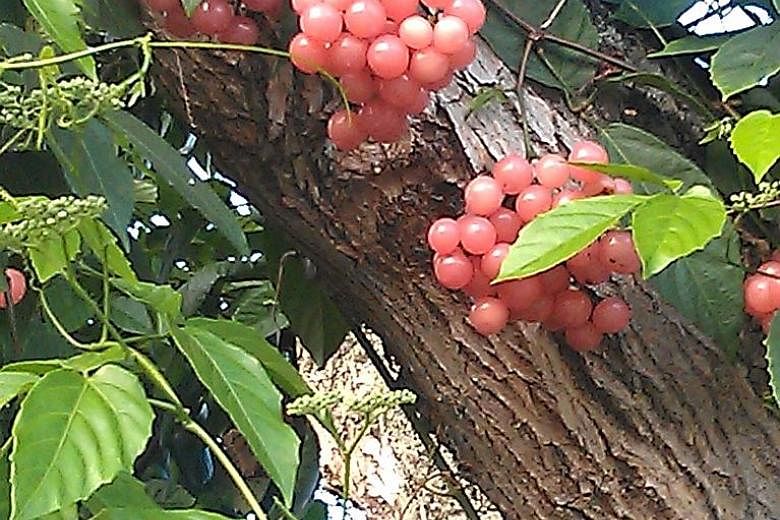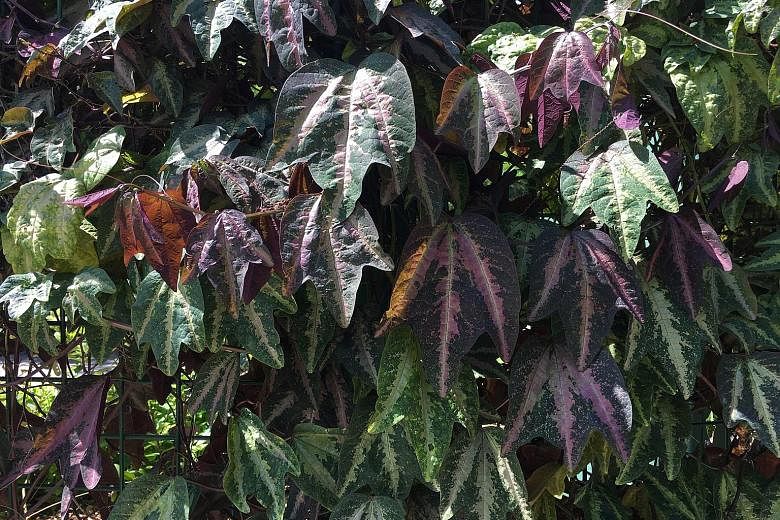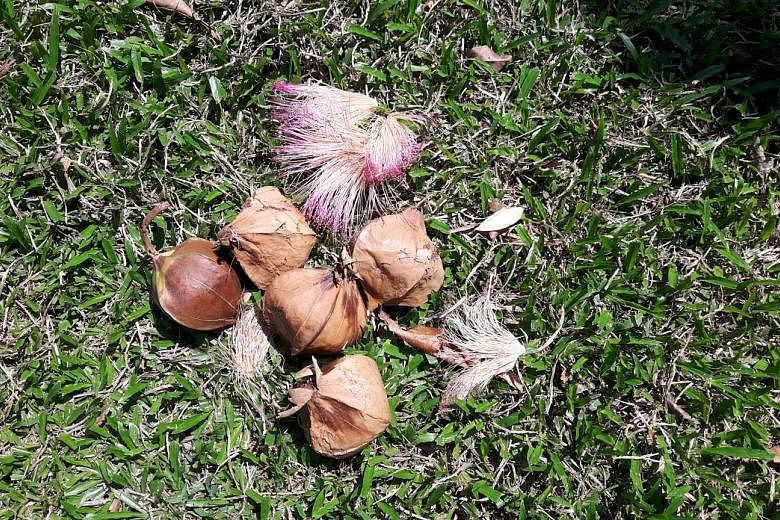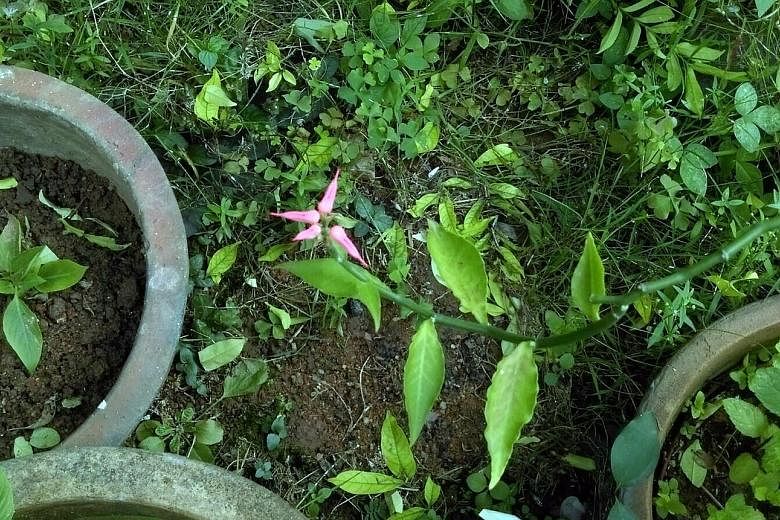Money Plant may be lacking water
How do I nurse my Money Plant (pictured) back to health? Its leaves are droopy, though they are still green.
It is placed indoors, where it is cool and has indirect sunlight. I feed the plant with fertilisers every two weeks.
Avon Neo
Your Money Plant - its botanical name is Epipremnum aureum - is probably lacking water.
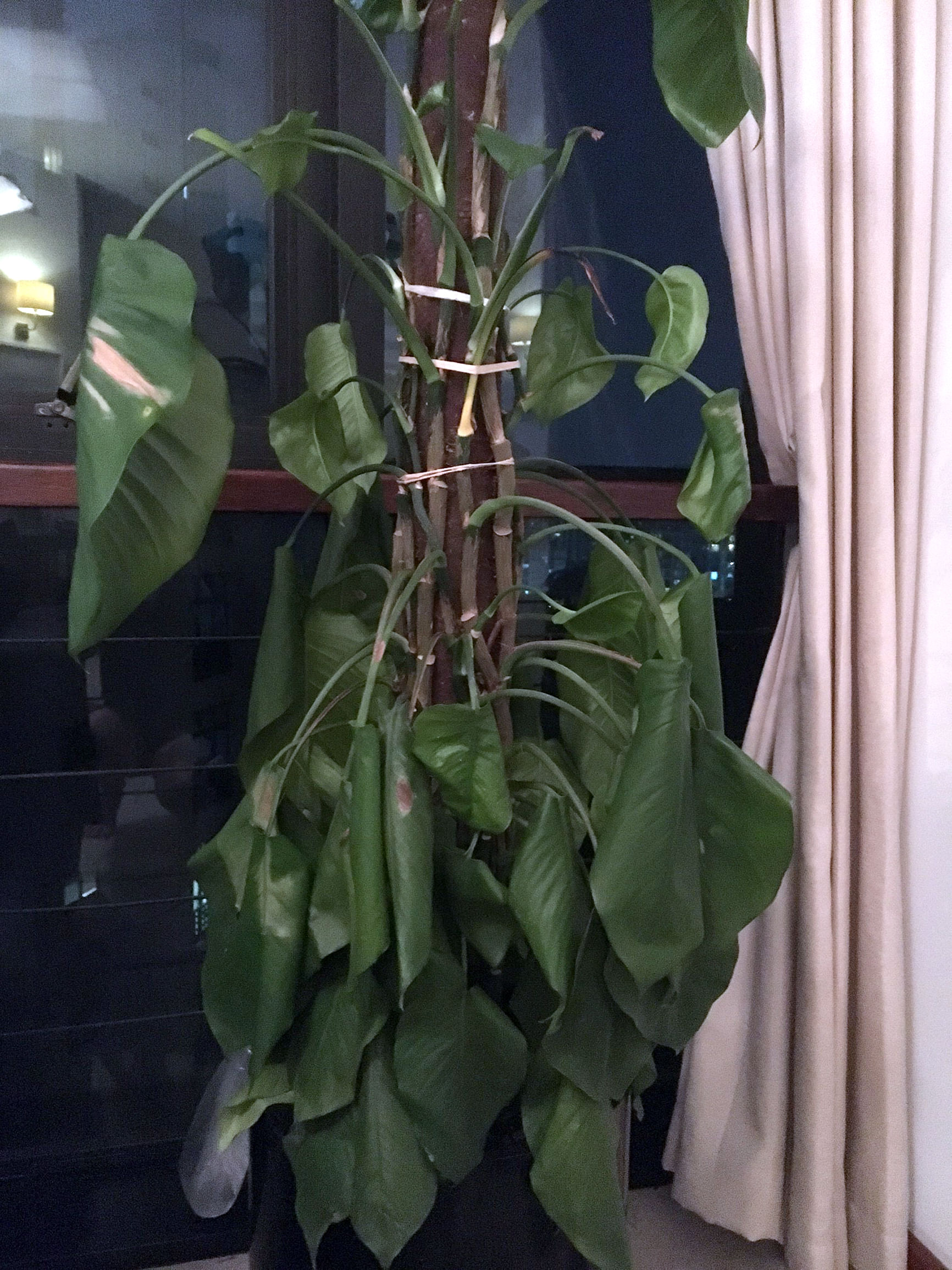
This plant prefers to be constantly moist at the roots, which should never be allowed to dry out totally. Do not place it in a windy location as constant wind can dry the plant.
Despite being known as a house plant as it is shade-tolerant, the Money Plant is affected by a lack of sunlight over a period of time. It should be exposed to four to six hours of filtered sunlight daily.
Grape-like fruit inedible
I saw this creeper plant along Bedok Road, which has fruit (pictured) that look like grapes. Are they edible?
Jason Chow
The vine is botanically known as Cayratia mollissima. This plant does not have a common English name yet.
Its attractive pink fruit are inedible - going by reports of people who have attempted to eat them. Eating the fruit, even when they are ripe, causes a burning sensation in the throat and mouth.
Tip: The Three Banded Passion Flower is best planted outdoors
The Three Banded Passion Flower (pictured), which is botanically known as Passiflora trifasciata, is grown more for its foliage rather than its fruits or flowers.
This climber has attractive leaves - three distinctive lobes with a purple stripe running through each of them, against a dark green background. The underside of each leaf is a rich purple shade.
The Three Banded Passion Flower requires full sun to grow well and is best planted in an outdoor garden. The soil should be moist, fertile and well-draining.
The Sea Poison Tree grows along coastal areas
What is this fruit (pictured)?
Sandra Tan
The fruit and flowers shown in your picture are produced by a plant called Putat Laut or Sea Poison Tree. Its botanical name is Barringtonia asiatica.
It grows as a large tree and is native to Singapore. It grows naturally along coastal areas. The seeds of this tree, which contain a toxin that is used as fish poison, are thrown into the water to stun fish.
Safe to plant Devil's Backbone next to edible plants
What is this plant (pictured) and how do I grow it? Is it possible for me to grow edibles such as herbs in the same pot as this plant?
Doris Yee
The plant you have is botanically known as Euphorbia tithymaloides. It is commonly known as Devil's Backbone, Zigzag plant and Jacob's Ladder due to how its stems look.
It produces small, pink bird-like flowers. It has been observed that this plant flowers when it grows to about 1m tall. Let the plant grow without excessive or frequent pruning and under full sun. Use soil that drains well to prevent the stems from rotting.
The sap of this plant is poisonous, though the toxins do not seep into the soil or nearby plants. So, it is safe to plant edible plants next to it. But remember to tell visitors to your garden not to pick these plants and eat them.
• Answers by Dr Wilson Wong, a certified practising horticulturist and founder of Green Culture Singapore (www.greenculturesg.com). He is also an NParks-certified park manager.
• Have a gardening query? E-mail it with clear, high-resolution pictures of at least 1MB, if any, and your full name to stlife@sph.com.sg.
